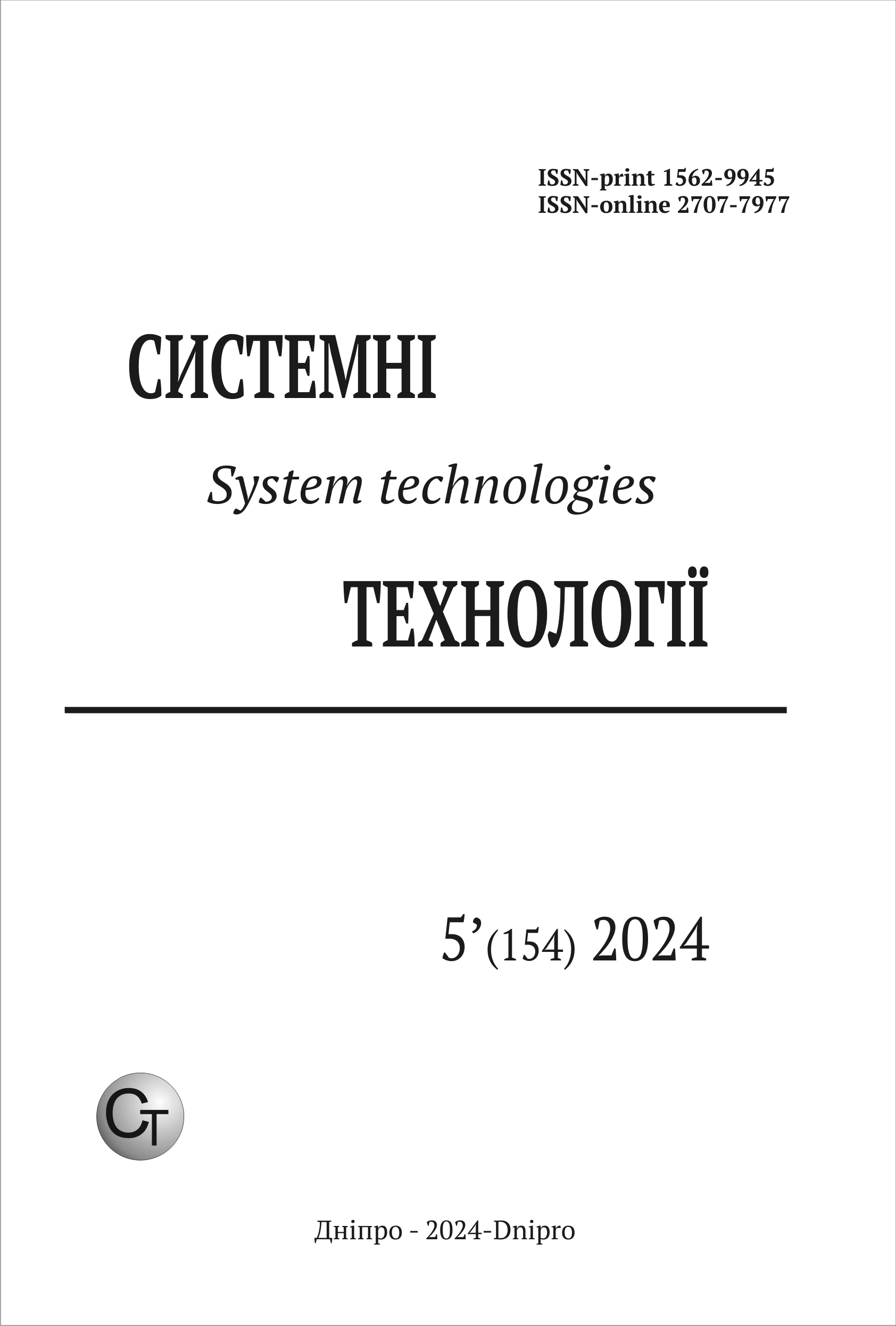Analysis and preparation of data during modeling of plasma-chemical processes of obtaining nanosystems
DOI:
https://doi.org/10.34185/1562-9945-5-154-2024-04Keywords:
statistical data analysis, regression models, simulation of plasmatic processes of obtaining nanosystems.Abstract
One of the new directions of industrial chemical technology is plasma chemical. Despite sig-nificant experimental and theoretical research, physicochemical processes are complex and not ful-ly understood for scaling and control in mass production. In low-temperature plasma, chemical processes, regularities of reactions, and the basics of plasma chemical technology require computer modeling. The experimental data of natural experiments require additional analysis and prepara-tion for their further application and the construction of adequate simulation models of plasma-chemical processes for the development of nanosystems. In the course of the preliminary experi-ment, which includes two stages, the input and output variables of the application task were exam-ined. A software toolkit has been developed for the analysis of experimental data, which allows col-lecting statistical information and visualizing some processes. The software approaches to building analytical and simulation models of plasma-chemical processes of obtaining nanosystems were considered and implemented. Two possible approaches to the construction of homomorphic models are reviewed: classical and with the use of artificial intelligence. Without limiting judgment, linear and non-linear regres-sion models were reviewed. The first type of model is multiple regression and methods that use reg-ularization. As an alternative, the construction of nonlinear models based on the method of support vectors is proposed. Vector and multi-vector regressions are considered. Multidimensional regres-sion is aimed at studying and constructing a mapping of a multidimensional input feature space into a multidimensional output space. The obtained numerical results were analyzed and it was pro-posed to use nonlinear models of plasma-chemical processes for obtaining nanosystems for com-puter simulation, in particular: multi-vector regression.
References
Zhang T., Song Y.-J., Zhang X.-Y., and Wu J.-Y. Synthesis of silver nanostructures by multistep methods. Sensors, 2014. vol. 14, no. 4, pp. 5860–5889.
Skiba M. I., Vorobyova V. I. Synthesis of silver nanoparticles using orange peel extract prepared by plasmochemical extraction method and degradation of methylene blue under solar irradiation. Advances in Materials Science and Engineering, 2019. Р.1-8.
Skiba M., Vorobyova V., Pivovarov A., Makarshenko N. Green synthesis of silver nanoparticles in the presence of polysaccharide: optimization and characterization. Journal of Nanomaterials, 2019. Р.1-10.
Makarchenko V., Korotka L., Skiba M. Neural network modeling of plasma-chemical processes of obtaining nanosystems. International scientific and technical conference Information Тechnologies in Metallurgy and Machine building (ITMM 2023), 2023. р. 99-101 (DOI: 10.34185/1991-7848.itmm.2023.01.024)
Verma S.; Chugh S.; Ghosh S.; Rahman B.M. Artificial Neural Network Modelling for Optimizing the Optical Parameters of Plasmonic Paired Nanostructures. Nanomaterials, 2022. 12, 170. https://doi.org/10.3390/nano12010170
Зеленцов Д.Г., Коротка Л.І. Технології обчислювального інтелекту в задачах моделювання складних систем: монографія. Баланс-Клуб, Дніпро. 2018. 178 с.
Коротка Л.І. Функціональна підсистема раціонального вибору архітектури нейронної ме-режs. Вісник Херсонського національного технічного університету, 2017. 3(62), Том І. (Фун-даментальні науки). С. 55-59.
Коротка Л.І. Аналіз нейромережевих моделей в задачах оптимізації технології енергокон-денсованих систем. Математичне моделювання, 2018. № 1 (38). С. 69-76.
Жерон Орельен Прикладне машинне навчання за допомогою Scikit-Learn та TensorFlow: концепції, інструменти та техніки для створення інтелектуальних систем. Пер. з англ. - СпБ.: ООО «Альфа-книга», 2018. - 688 с.: іл.
Gareth James, Daniela Witten, Trevor Hastie and Robert Tibshirani. An Introduction to Statistical Learning. Springer Texts in Statistics, 2013. 426 р.
Muhammad Raza, Mumtaz Ahmed, Shahid Razzaque, Hafsa Hina. Testing for Heteroskedasticity in The Presence of Outliers. Journal of Education and Social Studies, 2023. 4(2):313-329. (DOI: 10.52223/jess.2023.4209)
Mike X Cohen. Practical Linear Algebra for Data Science: From Core Concepts to Applications Using Python. O'Reilly Media, 2022. 326 р.
Roderick J.A. Little та Donald B. Rubin. Statistical Analysis with Missing Data. Wiley. John Wiley & Sons, LTD, 2019. 462 р.
Alex J. Smola and Bernhard Schölkopf. A Tutorial on Support Vector Regression. Statistics and Computing, 2004. No.14: 199–222.
Shuo Xu, Xin An, Xiaodong Qiao, Lijun Zhu, Lin Li. Multi-output least-squares support vector regression machines. Pattern Recognition Letters, 2013. Volume 34, Issue 9. P. 1078-1084.
Downloads
Published
Issue
Section
License
Copyright (c) 2024 System technologies

This work is licensed under a Creative Commons Attribution 4.0 International License.















